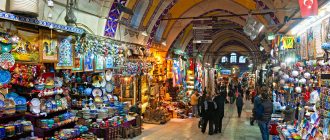Looking for information on Turkish arts? Here we run you through some basic information on the arts of Turkey from the Ottoman Empire to modern Turkish state.
The first main contributions that the Turkish made to the arts coincided with the zenith of Ottoman power between the 16th-18th centuries. Aside from the splendid and unique Ottoman architecture that can still be seen in mosques and buildings across Turkey today, the Ottoman Turks were active in many disciplines within the arts. These included geometrically designed stained glass windows which are used in mosques, and a distinct style of Turkish calligraphy which forms and important part not only of Turkish art but also Islamic arts. Textile design both for weaving carpets and tailoring costumes is another field of arts to which the Turkish contributed significantly. Another form of Turkish expression of arts came through horticulture and landscape gardening. Ottoman Turkish literary arts comprised of poetry that is influenced by Persian and Arabic with subject matters of mystical love and the quest for divine union being a prevalent theme throughout this form of Turkish art.
Modern Turkish Art
Towards the end of the 19th century arts in Turkey began to be influenced more heavily by European art and for the first time Turkish artists started painting still life portraits which had previously not been pursued as a form of art because of religious injunctions discouraging such art. The Europeanization of Turkish art gained pace with the founding of modern secular Turkey when Attaturk encouraged Turkish artists to pursue European arts like painting and sculpture through government sponsored academies for Turkish arts.
Modern Turkish literary Art
Similar changes took place in Turkish literary arts when under Ataturk’s rule the Turkish language was changed to remove words of Arabic and Persian origin and the script was changed from Arabic to Latin. Several Turkish authors and poets have had their works of art translated into other languages and have received recognition for their arts internationally including Orhan Pamuck, Nazim Hikmet and Yashar Kemal.
Turkish arts today can still be found in the villages of Turkey where traditional Turkish embroidery and the making of lace has been going on for hundreds of years and is still taking place. These examples of Turkish arts are usually found on sale in the bazaars of most Major Turkish cities. Perhaps the most commonly sold piece of Turkish Art that tourists bring back with them is the small turquoise coloured charm that is supposed to ward off the evil eye. Traditionally this piece of Turkish art was made from clay or glass although increasingly these days plastic charms are on sale.





